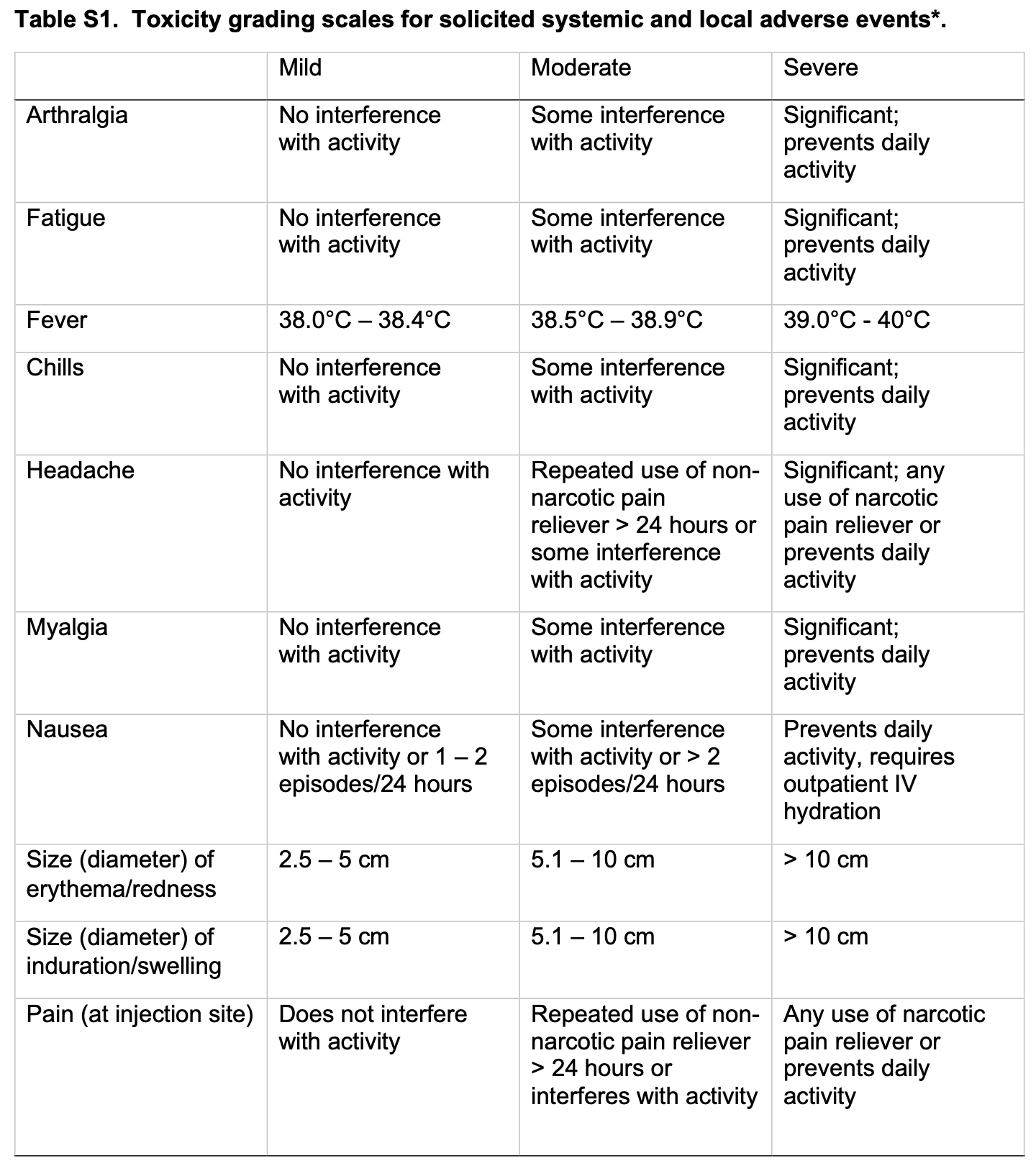

Because each new vaccine is based on a genetic template, it can quickly be shared with vaccine manufacturers located around the world. Voiceover: The new vaccine technology platform, called RapidVac, makes that much easier than before. Going from, you know, millions to billions of doses then becomes a global effort. Professor Robin Shattock: We already know that the manufacturing partners we're working with can produce five million doses within a period of weeks. Voiceover: That will show if the vaccine successfully protects against Covid-19.
Moderna side effect stats trial#
Professor Robin Shattock: The manufacturing of the vaccine is going ahead so we anticipate we'll be starting our clinical trial – our first clinical trial – in June of this year.

Moderna side effect stats code#
These tiny harmless pieces of artificial genetic code are being used to create a safe, effective synthetic vaccine against the coronavirus that causes Covid-19. Voiceover: When scientists detect a potentially deadly new pathogen, they can now map its genetic blueprint and synthesize small sections of it. Professor Robin Shattock: So, we've been looking for technology that could make a vaccine from discovery to being in a vaccine vial within a matter of weeks. That is becoming a reality thanks to new platform technologies that can rapidly create multiple vaccines designed to protect against deadly diseases including Covid-19. Voiceover: Imagine if vaccines could be created at previously unimaginable speeds. A manufacturing plant could, in theory, produce multiple vaccines using the platform, whereas other vaccines, such as MMR (measles, mumps, and rubella) and Ervebo (one of the Ebola vaccines), each require their own dedicated manufacturing plant. The same RNA vaccine platform could be used to produce vaccines against different diseases – both known and emerging. They could be more adaptable and easier to manufacture at scale.This means each individual vaccine dose should be cheaper to purchase, although it is dependent on the price set by pharmaceutical companies and the costs of delivery. Only a small amount of RNA needs to be delivered into the body’s cells, compared to the much larger micrograms of protein that are required for many other vaccines. This means they are quicker to get into clinical trials and quicker to manufacture once the trials are completed – in a matter of weeks and months. RNA vaccines are based on a process of biochemical synthesis that involves fewer components and fewer steps than the more complex traditional methods, like using inactivated live viruses.

RNA vaccines hold the promise of being faster, cheaper, more adaptable and easier to mass-produce than other vaccines, because: So hence there was a need for brand new technology, and that’s what this mRNA approach was. Now this virus as we all know is in the same family as the common cold virus. I’d also say Anna, that they decided to try it because other approaches have failed previously with things like the common cold. So, it’s a great example of basic discovery I suppose giving rise to a whole new approach. So, it’s remarkably simple in a way and certainly, the Pfizer one is the first time an mRNA has been approved for use and now it’s been used in millions of people. Now you make the spike and now your immune system makes antibodies and T Cells to recognise that spike protein. This is a viral protein and remember there is no virus there, it’s just the spike, it can’t make you sick. So, you literally inject the recipe of the spike into your muscle and your body reads off that recipe and makes lots of spike protein. Professor Luke O’Neill: What it is, is the recipe to make the spike protein. I wonder if you could talk through your way of explaining how those work because they are a new type? Anna Mouser: This pandemic has seen us develop a new kind of vaccine, the mRNA vaccines.


 0 kommentar(er)
0 kommentar(er)
